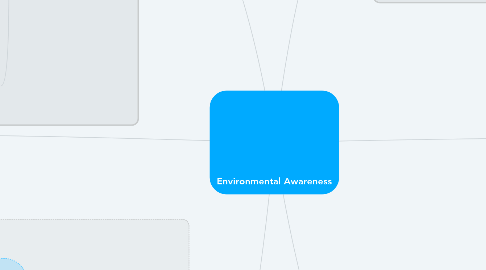Environmental Awareness
por Jade Jhun Rocacurva

1. Make A Difference
1.1. After you have become environmentally aware you can begin teaching those around you. The symposium acts a catalyst for you to begin your role as an environmental steward and provides online courses and other resources to keep you on track. A good course of action that ensures your continued participation as a global citizen is to pick an environmental issue that strikes you as most urgent. The amount of environmental issue seems limitless and while they are all important it is best to initially focus on one cause. You will soon see that all environmental issues are intertwined and will find your niche of interest. After your decision is made you then explain its importance and urgency to your community, friends, and family, create beneficial communal projects, and find more causes to become apart of.
2. Examples of Environmental Issues That Need Fixing
2.1. Oil Drilling
2.1.1. This issue is one that causes a great deal of environmental destruction. Our dependence on fossil fuel is a global addiction that affects every aspect of the world. Oil spills and offshore drilling poison marine life, oil drilling (on land) suffocates the earth, and the combustion of fossil fuels add to the increased atmospheric CO2, which in turns causes the progression of global warming and ocean acidification. This is a multifaceted issue and is a good cause to get involved with because it covers such a broad spectrum of issues.
2.2. Deforestation
2.2.1. Millions of acres of forest are cut down for industrial benefit, such as large scale farming, oil mining, and the production of paper goods. Deforestation causes wildlife and biodiversity extinction. The International Union for Conservation of Nature (IUCN) has a Red List of environmentally threatened species with up-to-date information. Oftentimes, the cause for their threatened existence is listed as loss of habitat as it is for many Amazonian species.
2.3. Production of Plastic Goods
2.3.1. Currently our society creates a great deal of waste and much of that waste is comprised of plastic. According to the Environmental Protection Agency (EPA) in 2010 alone 31 million tons of plastic waste was created. This waste ends up all over the globe in both land and water, a good example is the Great Pacific Garbage Patch. Not only is plastic waste an issue, but the production of plastic is also dependent on fossil fuel combustion. According to the U.S. Energy Information Administration (EIA) in 2010 191 million barrels of liquid petroleum gases(LPG) and natural gas liquids (NGL) were used in the U.S. alone to produce plastic goods.
3. Possible Project Ideas
3.1. Instead of driving to work or school, take the bus, carpool, walk, or ride your bike to cut down on greenhouse gas emissions. According to the EPA transportation adds to 33% of the total atmospheric CO2.
3.2. Consider investing in appropriate technology like clean power (solar or wind), if not for your home maybe for a community center. This will also help wean ourselves off fossil fuels.
3.3. Buy reusable products such as glass bottles, reusable bags and cups etc. Avoid buying paper towels, plastic bottles and bags.
3.4. Start composting and recycling, which will help cut down our waste production.
3.5. Support local businesses and farmers by only buying organic food at farmers markets. Make sure the food is pesticide free. This will help your community become self-reliant.
4. Definition
4.1. Environmental awareness is to understand the fragility of our environment and the importance of its protection. Promoting environmental awareness is an easy way to become an environmental steward and participate in creating a brighter future for our children.
5. Promoting Environmental Awareness
5.1. When learning about the environment’s declining health it is easy to feel discouraged, but what keeps us fighting for a healthy world is the future of our children. They should not have to inherit our environmental problems and in order to keep their future bright, spreading awareness is imperative. Before you can begin promoting environmental awareness in your own community you must first make sure that you have a thorough understanding of environmental issues. Staying up to date on environmental news and reading comprehensive books about environmental threats are both great resources, but if you’re the type of person who prefers a more interactive approach, attending environmental seminars is a great option.
6. Share Your Knowledge
6.1. Once you have chosen your cause and figured out some beneficial activities, share it with the world! Get your community, friends, and family involved. Use your political voice in your local city council and propose environmentally sustainable and beneficial projects. Start a community garden, buy from local stores and farmers markets, make your public transportation more efficient and/or start implementing clean energy strategies in your community centers. It is more than likely that your children are learning about environmentalism in school, but it does not have to be limited to school grounds. Children learn a great deal at home and by using green practices you will be providing them with a strong foundation for environmental stewardship. Promoting environmental awareness is a crucial part of being an environmental steward. Start participating in the change and teach your community what it means to be sustainable.

